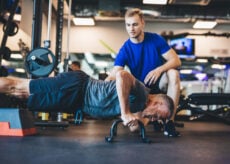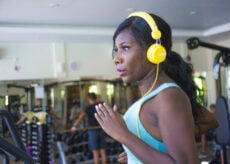Balance Board Exercises: 4 Benefits + How to Get Started
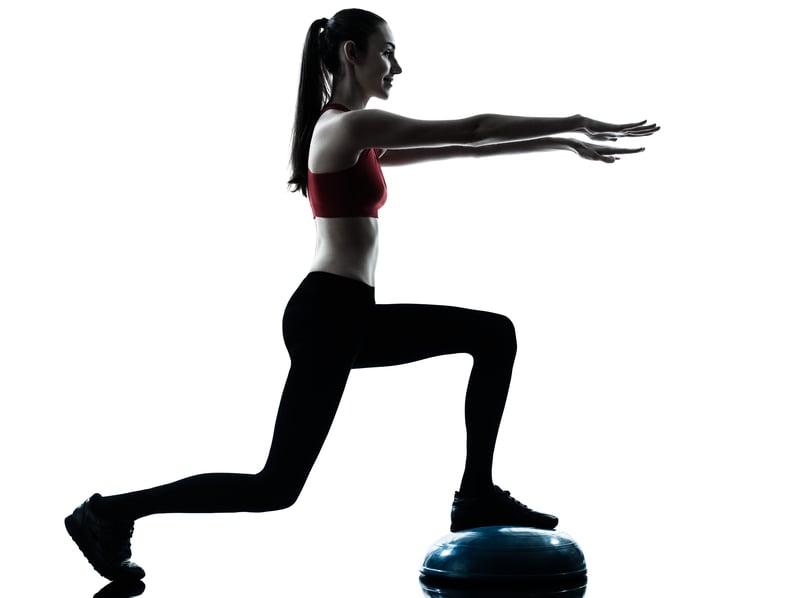
While there are many fitness gadgets out there, perhaps none is as versatile as a balance board. Balance board exercises are designed to help you move through different planes of movement, challenging your body from various angles and strengthening you as you go.
What is a Balance Board?
Balance boards are designed to be unstable surfaces, and by using them in specific ways, they help you increase your ability to balance. They typically consist of some type of flat rigid board, which is set on top of what’s called a “fulcrum.” The fulcrum is a rounded piece beneath the rigid board that allows it to move in unstable ways. The premise behind balance board exercises are to challenge your muscles and tendons and to prevent future injury by improving stability.
What Kind of Balance Boards are Available?

There are different types of balance boards, too. Depending on your goals and your level of fitness, you should be able to find a balance board that suits your needs. Try different ones, beginning with easier boards and progressing to more difficult ones that move in all planes.
Wobble board—this has an attached fulcrum that moves in any direction, so when you step on the rigid platform, you can tip to any side. It’s good for intermediate athletes.
Spring board—with its attached fulcrum, this board can move in multiple directions and has a spring-loaded middle to help propel your movement.
Rocker board—this has an attached fulcrum and a board that moves back and forth or side to side. Good for relative beginners.
Sphere and ring board—this board consists of a circular board with a round and unattached fulcrum, which can move in any direction. Best for more advanced athletes.
BOSU ball—this popular multi-use fitness device doubles as a balance board and a versatile piece of equipment. The top half of the board is rounded and squishy with a bottom side that’s flat and rigid. You can use either side of the ball for stability exercises. This is a great starting point for those new to balance exercises.
What are the Benefits of Using a Balance Board?
A balance board allows you to keep your body unsteady as you move through various exercises. These boards will allow you to pivot, tilt, slide, rotate, roll, and balance. As such, balance board exercises can help:
- Improve posture—using a balance board can help you improve your posture by forcing you to adjust as you go through movements, stabilizing your back, core, and hips.
- Rehab injuries—balance boards are a great place to start when you have an injury and you’re trying to make a comeback. Slowly working your way through all of the different angles of a movement can help you gently strengthen your way back to solid health.
- Strengthen joints and ligaments—by working your way through unstable exercises, you can help prevent future injuries. The strength you get from working out on unstable surfaces can prepare your body and help guard against sprains and strains.
- Improve overall balance—with continued and regular use, you can vastly improve your ability to balance.
Balance Board Exercises to Get Started
Keep in mind, you may need to start these balance board exercises with a spotter at your side or next to something (like a wall, chair, or countertop) to hold onto. Start slowly and work your way up to longer workout sessions.
1. Standing Exercises

These will work your core, legs, ankles, and feet. Stand on a balance board with your arms at your sides for balance and tip slightly forward and then slightly back.
Continue the forward and back motion for 20 repetitions.
Next, tip to the right and then tip to the left, working your ankles side to side. Do 20 reps here as well.
Lastly, complete five full circles in a clockwise direction and then five full circles in a counter-clockwise direction.
2. Air Squats
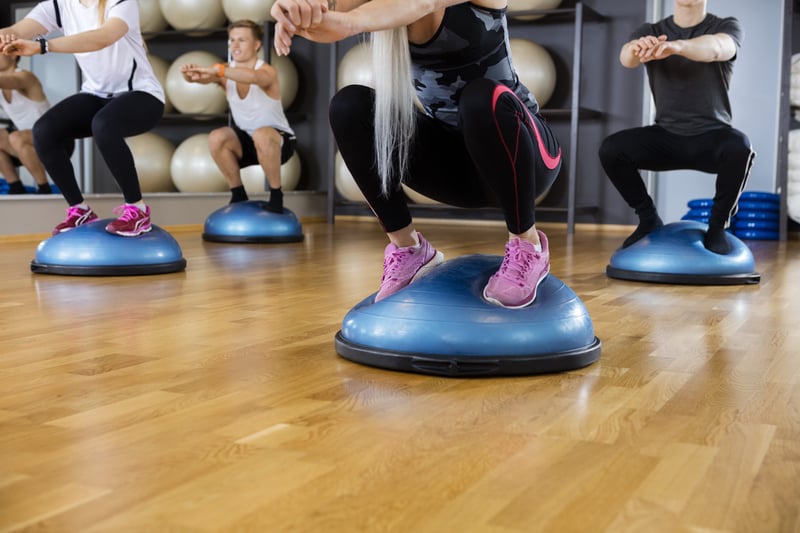
Using your arms for balance, place your feet about hip-width apart (if there is space) on the balance board. Slowly bend at the knees and kick your hips back as you lower your body toward the floor. Balancing throughout, push back up to the starting position through your heels.
3. Single Leg Lifts
Depending on your fitness level, these can be a great exercise to help boost your stability. Start with both feet on the balance board, slightly apart and your hands at your sides for balance. Next, lift your right foot off the board and hold it up while you balance with your left foot and leg. Start with smalls lifts at first as you progress through this movement. As you get more talented at this exercise, try lifting your leg higher and higher by sliding your right foot up your left leg. Eventually, with practice, you should be able to stand with your right foot against your inner left knee for a count of five before returning to the start.
4. Balance Board Planks
Start on your knees and place either your forearms or hands on each side of a balance board. Get up onto your toes as you straighten your body into a plank position. Hold this position as you balance your upper body on the balance board. Try to hold for a count of 5 or 10, increasing in small increments every time you do this exercise.
5. Balance Board Pushups
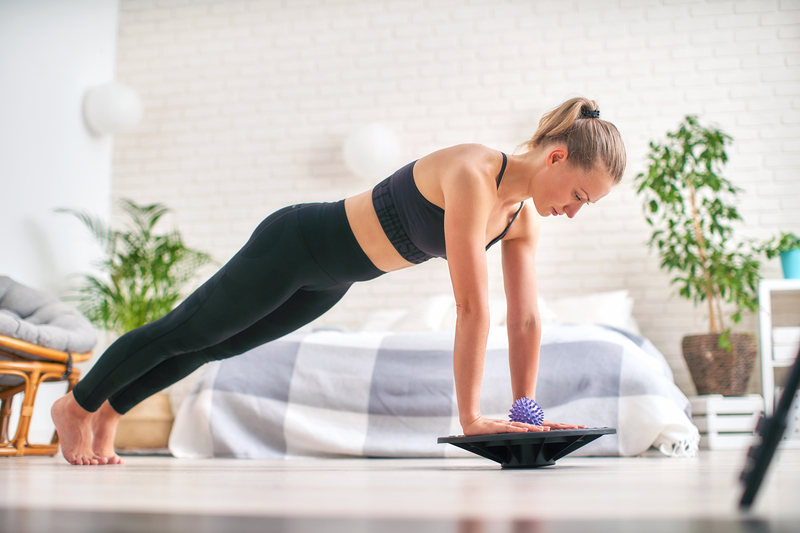
Start on your knees and place either your forearms or hands on each side of a balance board. Get up onto your toes as you straighten your body into a plank position. Hold this position as you balance your upper body on the balance board. Try to hold for a count of 5 or 10, increasing in small increments every time you do this exercise.
6. Decline Pushups
For stability training for the core and lower body, simply switch the position of the board and place it under your feet instead of under your hands. Place your hands flat on the ground directly under your shoulders, using your feet to balance your body.
RELATED: Collagen Doesn’t Work (Unless…)
7. Stability Lunges

These will challenge your legs, hips, knees, ankles, and core. Start by standing about a foot away from the stability board. Take a giant step forward with your right leg and step onto the balance board. Stabilize and then push through your heel to return to the starting position. Repeat on the opposite side. Do 20 repetitions.




 7 Signs Your Body is Seriously Low on Collagen (not just wrinkles)
7 Signs Your Body is Seriously Low on Collagen (not just wrinkles) Health Expert: "Turmeric Doesn't Work (unless...)"
Health Expert: "Turmeric Doesn't Work (unless...)" 3 Warning Signs Your Probiotic Supplement is a Total Waste
3 Warning Signs Your Probiotic Supplement is a Total Waste
